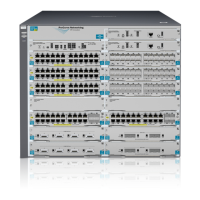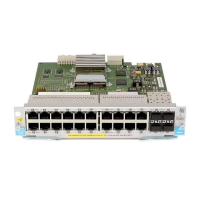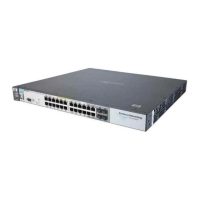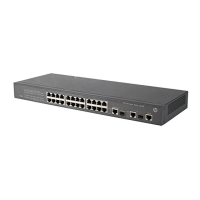6-5
Stack Management for the 3500, 3500yl, 6200yl and 6600 Switches
Introduction to Stack Management on the 3500, 3500yl, 6200yl and 6600 Switches
Operating Rules for Stacking
General Rules
■ Stacking is an optional feature (enabled in the default configuration)
and can easily be disabled. Stacking has no effect on the normal
operation of the switch in your network.
■ A stack requires one Commander switch. (Only one Commander
allowed per stack.)
■ All switches in a particular stack must be in the same IP subnet
(broadcast domain). A stack cannot cross a router.
■ A stack accepts up to 16 switches (numbered 0-15), including the
Commander (always numbered 0).
■ The stacking feature supports up to 100 switches in the same IP
subnet (broadcast domain), however, a switch can belong to only one
stack. In the event that the 100 switch limit is exceeded, it may take
multiple attempts to add or move a member to any given stack. Once
a member is added to a stack, it is not “forgotten” by the Commander.
■ The stack status (all) command will display up to 100 devices. Devices
that are not members of a given stack may periodically “drop out” of
the list.
■ If multiple VLANs are configured, stacking uses only the primary
VLAN on any switch. In the factory-default configuration, the
DEFAULT_VLAN is the primary VLAN. (See “Stacking Operation with
Multiple VLANs Configured” on page 6-43 and “The Primary VLAN”
on page 1-49.)
■ Stacking allows intermediate devices that do not support stacking.
This enables you to include switches that are distant from the
Commander.
Figure 6-3. Example of a Non-Stacking Device Used in a Stacking Environment
Commander Switch
Switch with Stacking
Disabled or Not Available
Member Switch
Candidate Switch
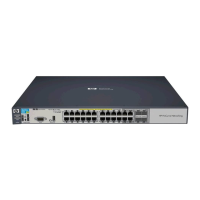
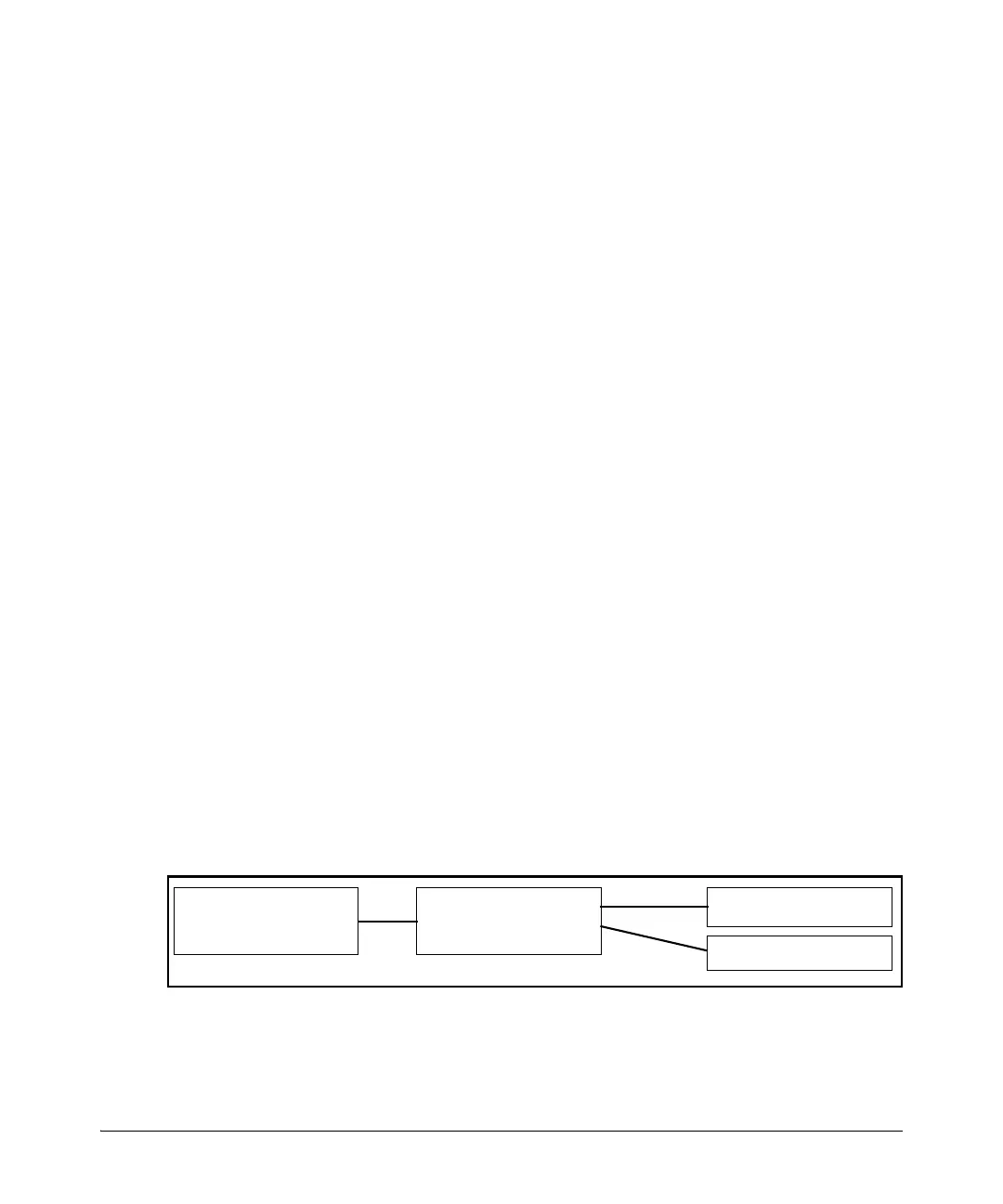